Rosy Barbs are an excellent addition to any community tank. They are a very active, schooling fish that loves to swim around. They’re pretty too, with their bright red fins.
This article will discuss the care and husbandry of these fish.
We will cover everything from tank size and water parameters to diet and breeding. So, whether you are a beginner or an experienced fish keeper, read on for all you need to know about keeping them happy and healthy.
Species Summary
| Scientific name: | Pethia conchonius |
| Common name: | Rosy Barb |
| Origin: | Southern Asia, from Afghanistan to Bangladesh |
| Size: | Up to 6 inches |
| Tank size: | 20 gallons minimum |
| pH level: | pH 6.0-8.0 |
| Water type: | Soft to medium |
| Nature: | Peaceful |
| Temperature range: | 64°- 72°F |
| Diet: | Omnivorous |
| Water hardness: | 5-19 dGH |
| Life Span: | up to 5 years |
These fish are a staple in fish store tanks, and for a good reason. They are hardy and easy to care for fish that are great for beginner and experienced aquarists alike.
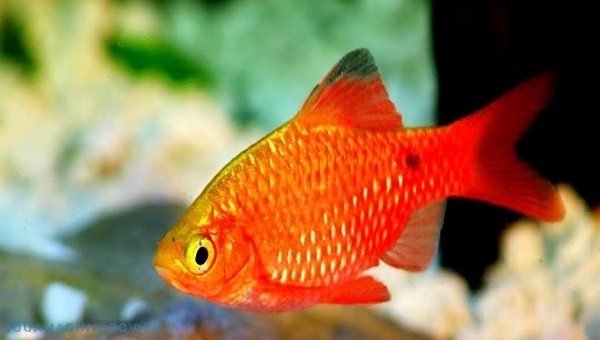
You’re in the right place if you’ve ever been curious about keeping Rosy Barb or are just looking for more information on their care and husbandry. This article will cover everything you need to know about these beautiful fish.
Rosy Barb Appearance
Rosy Barbs are a reddish-brown color with bright red fins. They have a black spot at the base of their dorsal fin and a silver stripe that runs down the length of their body.
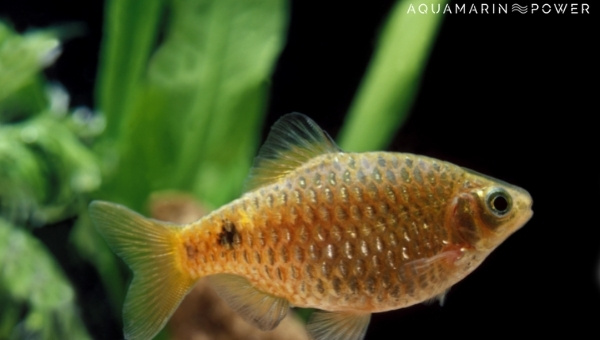
The body of the fish is wide and compressed from side to side. They have a deep, forked caudal fin and two pairs of barbels (whiskers) on their upper lip. The tail has a deep red color and is edged in black.
They are a schooling fish and should be kept in groups of 6 or more. When kept in smaller numbers, they can become shy and withdrawn. Compared to other fish species, they are medium-sized fish and will grow up to 6 inches in length.
Rosy Barb Size & Growth rate
The average Rosy Barb size is around 6 inches. They have a moderate growth rate and will reach their full size within two years. Most Rosy Barbs sold in stores are approximately 2-3 inches in length.
Rosy Barb Lifespan
The typical lifespan of a Rosy Barb is 5 years. However, there have been instances where they have lived up to 7 years.
While they are quite hardy, the average lifespan can be shortened if they are kept in poor water conditions. They can experience health problems such as fin rot, ich, and bacterial infections if the water quality is not maintained.
Rosy Barb Breeding
Rosy Barb breeding is relatively easy and can be done with simple steps.
The first step is to condition the fish. This can be done by feeding them a diet of high-quality food. The second step is to get the fish into breeding conditions. This can be done by raising the water temperature to about 80 degrees Fahrenheit. The third step is to introduce the male and female fish to each other. The male will start to chase the female around and eventually mate.
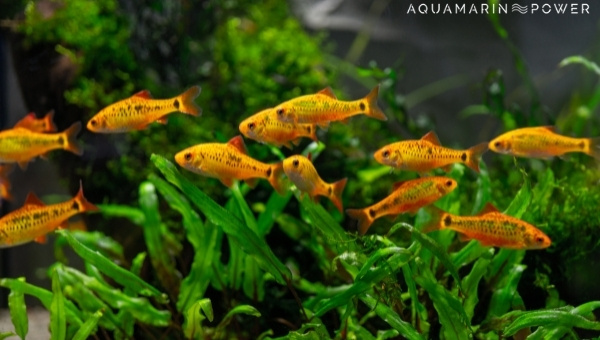
The next step is to remove the eggs. The eggs will be attached to plants or surfaces in the tank. They can be removed by gently pulling the plants or surface attached. The eggs should then be placed in a small water container and fertilized.
Then incubate the eggs. The eggs should be placed in an area with a consistent temperature of 80 degrees Fahrenheit. They will hatch in about five days.
The last step is to raise the fry. The fry should be fed a diet of high-quality food three times a day. They can be moved to a larger tank when they are about two weeks old.
Behavior & Temperament
Rosy Barbs are peaceful and docile fish perfect for the beginner aquarist. They are active fish that love to swim and play.
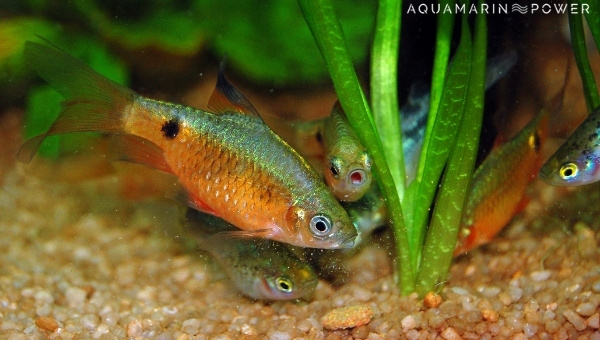
They do well in community tanks with other peaceful fish. They should not be housed with aggressive or predatory fish, as they may become stressed or injured.
They are an excellent choice for the beginner aquarist looking for a peaceful and active fish. They can be housed with other peaceful fish. The only form of aggression you may see from them is when they chase each other in play. They make a great addition to any aquarium!
Rosy Barb care
Rosy Barb care is relatively easy, and they are one of the hardier fish species. They’re among the few fish that can tolerate a pH as low as 6.0.
As with any other fish, it is important to maintain your Rosy Barbs in a healthy environment. This means keeping the water clean and providing the correct water parameters.
Of course, there are a few things you need to keep in mind when caring for these fish. So, let’s take a look at the basics.
Tank Size
When choosing a tank for your Rosy Barbs, remember that they need plenty of room to swim. A minimum tank size of 20 gallons is recommended. If you plan on keeping other fish with them, keep in mind that they will need even more space.
If you have a smaller tank, you can still keep them, but you will need to be more diligent about keeping the water clean. Weekly water changes of at least 25% are recommended.
Water Parameters
In the wild, Rosy Barbs prefer soft, acidic water. However, they can tolerate water with a higher pH and hardness as long as it is clean. The recommended water parameters are pH 6.0-8.0 and water hardness of 5-19 dGH.
While you don’t need to duplicate their natural environment exactly, it is essential to try and match these parameters as closely as possible. This will help keep your fish healthy and happy.
Water Temperature: They prefer a water temperature of 64°-72°F but can tolerate temperatures up to 80°F. They should not be kept in water colder than 60 degrees F or warmer than 80°F.
However, they can adapt to a wide range of water temperatures and even be kept in a tropical aquarium.
Water Changes: It is essential to perform water changes on a regular basis to keep your fish healthy. Weekly water changes of 25-50% are recommended.
Filtration
In order to keep the water clean, you will need to use a good quality filter. A sound filtration system will help remove waste and debris from the water and help keep the tank healthy.
Some of the famous filters are:
- HOB filter: A hang-on back filter is suitable for small to medium-sized tanks. It is easy to use and will keep the water clean.
- Canister Filter: A canister filter is a larger, more expensive filter perfect for larger tanks. It can handle a large amount of waste and keep the water clean and healthy.
- Internal filter: This type of filter is small and can be installed in a small tank. It is a good choice for tanks with low water volume.
Heater
In order to keep your fish healthy, it is important to keep the water temperature in your tank regulated. A good heater will help maintain the correct water temperature, regardless of outside temperature.
Aquarium Heaters come in two types:
- Submersible Heater: A submersible heater is a good choice for small tanks. It is easy to use and will heat the water quickly.
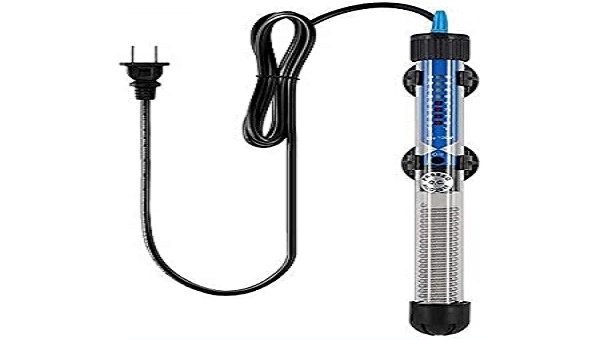
- Standalone Heater: A standalone heater is a good choice for larger tanks. It is more expensive than a submersible heater, but it will heat the water more evenly.
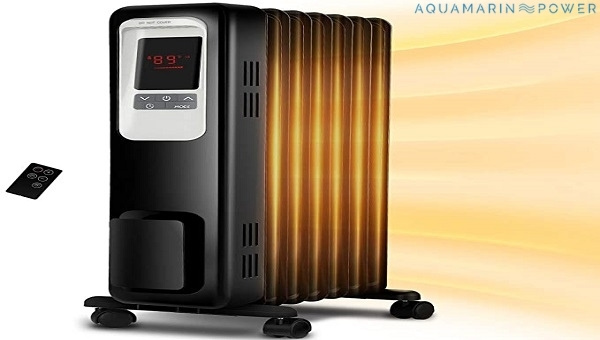
Algae Scraper
Algae can be a problem in any tank, but it can be especially troublesome in a tank with fish. An algae scraper is the perfect tool for removing algae from the sides of the tank.
There are a few different types of algae scrapers available:
- Manual Algae Scraper: A manual algae scraper is a cheap and easy option. It is a good choice for small tanks.
- Electric Algae Scraper: An electric algae scraper is a more expensive option, but it is faster and easier to use than a manual scraper.
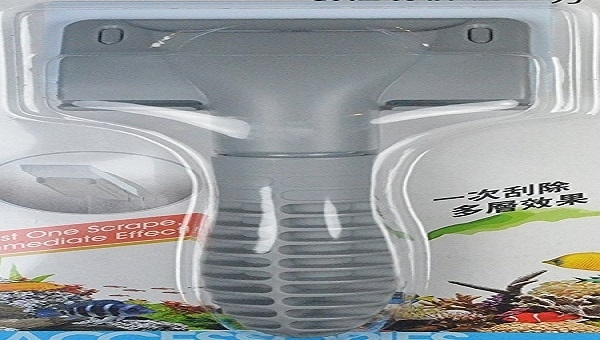
- Glass Aquarium Cleaner: A glass aquarium cleaner is a special type of algae scraper that attaches to the side of the tank. It is perfect for cleaning large tanks.
Lighting
In order to keep your fish healthy, it is important to have the correct lighting in your tank. A good quality light will help keep the water healthy and provide a source of illumination for your fish.
There are a few different types of aquarium lights available:
- Incandescent Bulb: An incandescent bulb is a traditional type of light bulb. It is inexpensive and easy to find, but it produces a lot of heat.
- Compact Fluorescent Bulb: A compact fluorescent bulb is a newer light bulb. It is more expensive than an incandescent bulb, but it uses less energy and produces less heat.
- LED Light: An LED light is the newest type of light bulb. It is the most expensive, but it also uses the least energy and produces the least amount of heat.
Other Equipment
In addition to a filter and heater, there are a few other pieces of equipment that you will need for your aquarium:
- Aquarium Vacuum: An aquarium vacuum is a tool used to clean the gravel in the tank. It is important to keep the gravel clean to prevent bacteria and algae growth.
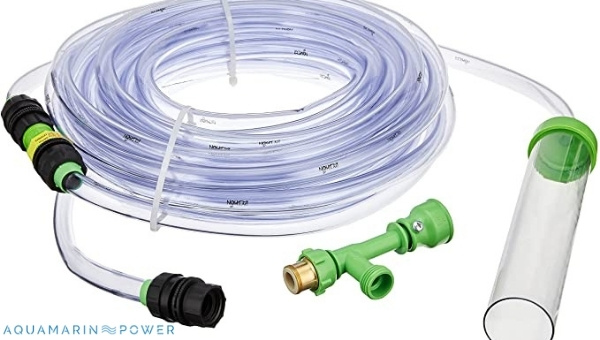
- Aquarium Net: A aquarium net is a tool used to catch and move fish in the tank. It is also helpful in removing debris from the water.
Aquarium Decorations
Rosy Barbs prefer a well-decorated tank with plenty of hiding places. You can add plants, rocks, and other decorations to your tank to make it more appealing to your fish. Be sure to add a few hiding places, as Rosy Barbs are shy fish and need a place to hide when they feel stressed.
You will also need to provide some substrate for your fish. A good substrate will help keep the water clean and healthy. There are a few different types of substrates available:
- Gravel: Gravel is the most common type of substrate. It is inexpensive and easy to clean.
- Sand: Sand is a more expensive option, but it creates a more natural look in the tank.
- Plants: Plants are a good choice for tanks with low water volume. They help keep the water clean and provide a place for your fish to hide.
Once you’ve decided on the type of substrate you want to use, it is time to add it to your tank. Be sure to add enough to cover the bottom of the tank.
Cleaning The Tank
It is important to clean your tank on a regular basis to keep the water healthy and the fish happy.
- Manual Cleaning: Manual cleaning is the most labor-intensive way to clean a tank, but it is also the most effective. You will need to scrub the sides of the tank and the gravel with a brush to remove any algae or dirt.
- Aquarium vacuum: This tool sucks up any debris from the gravel and helps to keep the water clean.
- Automatic Cleaning: Automatic cleaning is less time-consuming to clean a tank, but it is not as effective as manual cleaning. An automatic cleaner is a machine that scrapes the sides of the tank and cleans the gravel. It is an excellent option for tanks with large amounts of algae.
Cleaning the tank is an important task, but it can be a lot of work. Deciding which type of cleaner is right for you depends on how much work you are willing to do. If you are eager to put in the extra effort, manual cleaning is the best way. If you are looking for an easier option, automatic cleaning is a good choice.
No matter which type of cleaner you choose, it is important to clean the tank on a regular basis to keep the water healthy and the fish happy.
Common Possible Diseases
There are a few common diseases that can affect Rosy Barbs:
- Ich: Ich is a parasitic infection that can cause white spots to appear on the fish.
- Dropsy: Dropsy is a bacterial infection that causes the fish to swell up and lose balance.
- Fin Rot: Fin Rot is a bacterial infection that causes the fins to rot and fall off.
If your fish show any of these symptoms, it is important to take them to a veterinarian for treatment. These diseases can be dangerous to the fish and often lead to death.
Treatment And Medications Of Diseases
The best way to treat diseases in fish is with antibiotics. There are a few different types of antibiotics available:
- Amoxicillin: Amoxicillin is a broad-spectrum antibiotic that can treat various diseases.
- Tetracycline: Tetracycline is also a broad-spectrum antibiotic that can treat many different diseases.
Both of these antibiotics are available over the counter at most pet stores. If your fish show any signs of a disease, it is important to take them to a veterinarian for treatment.
The most common way to prevent diseases in fish is with a good diet and healthy water. Keep your tank clean and give your fish a balanced diet. This will help keep them healthy and reduce the chances of getting sick.
Rosy Barb Food & Diet
Rosy Barbs will not shy away from a good diet. In the wild, they mostly eat insects, but they will gladly accept most types of food in the aquarium.
- Flake food: Flake food is the most common fish food. It is inexpensive and easy to find.
- Live food: Live food is a great option for fish looking for a more protein-rich diet. Some good choices for live food include brine shrimp, bloodworms, and daphnia.
- Canned food: Canned food is an excellent option for fish looking for a more balanced diet. It contains both protein and carbohydrates, which help keep the fish healthy.
You can also give your fish some diced fruit or vegetables for snacks. This is a great way to provide them with added vitamins and minerals.
Rosy Barbs will thrive on good flake food and live food diet. Be sure to give them a variety of different foods to keep them healthy and happy.
Diet Foods To Avoid
There are a few types of food that you should avoid feeding your Rosy Barbs:
- Junk food: Junk food is high in unhealthy fats and sugars and should not be given to fish.
- Processed food: Processed food is high in chemicals and preservatives and can be dangerous to fish.
- Raw meat: Raw meat can contain bacteria that can be harmful to fish.
Unhealthy food can lead to health problems for the fish and should be avoided.
Tank Mates
Thanks to their peaceful nature, they can be housed with a variety of different fish.
Some good options include:
- Guppies: Guppies are peaceful and easy to care for fish that make a great addition to any aquarium.
- Platys: Platys are also peaceful and easy to care for fish in various colors.
- Rope Fish: Rope Fish are peaceful and schooling fish that add a lot of interest to any aquarium.
- Emperor Tetra: Emperor Tetras are peaceful and colorful fish that make a great addition to any aquarium.
- Black Ghost Knife Fish: Black Ghost Knife Fish are peaceful and unique fish that add interest to any aquarium.
- Neon Tetra: Neon Tetra is peaceful and easy to care for fish that make a great addition to any aquarium.
- Celestial Pearl Danio: Celestial Pearl Danio is peaceful and easy to care for fish that make a great addition to any aquarium.
- Swordtails: Swordtails is peaceful and easy to care for fish that make a great addition to any aquarium.
- Rosy Barbs can also get along well with most types of snails.
Fish To Avoid:
However, there are a few fish that you should avoid housing with:
- Angelfish: Angelfish are predatory fish that may attack and eat smaller fish.
- Barbs: Other types of barbs may become aggressive towards Rosy Barbs and may harm or kill them.
- Mollies: Mollies are a type of livebearer that can reproduce quickly. If too many mollies are housed with Rosy Barbs, the barbs may become overpopulated and stressed.
Advantages Of Having Rosy Barb In Your Tank
The advantage of keeping Rosy Barbs in your tank is that they are hardy fish that can thrive on a variety of different diets. It is important to keep their tank clean and have a balanced diet to keep them healthy and happy.
Another advantage is that they are peaceful and docile fish, perfect for the beginner aquarist. They are active fish that love to swim and play.
They do well in community tanks with other peaceful fish. They should not be housed with aggressive or predatory fish, as they may become stressed or injured.
Disadvantages Of Having Rosy Barb In Your Tank
The only disadvantage of keeping Rosy Barbs in your tank is that they may become overpopulated if too many are housed together. This can lead to stress and illness in the fish.
Wrapping Up
As you can see, Rosy Barbs are a great fish for any aquarium. They are hardy, peaceful, and docile. They make a great addition to any tank and are perfect for the beginner aquarist.
I hope that this article has helped you to understand more about Rosy Barbs and how to care for them. Thanks for reading!



